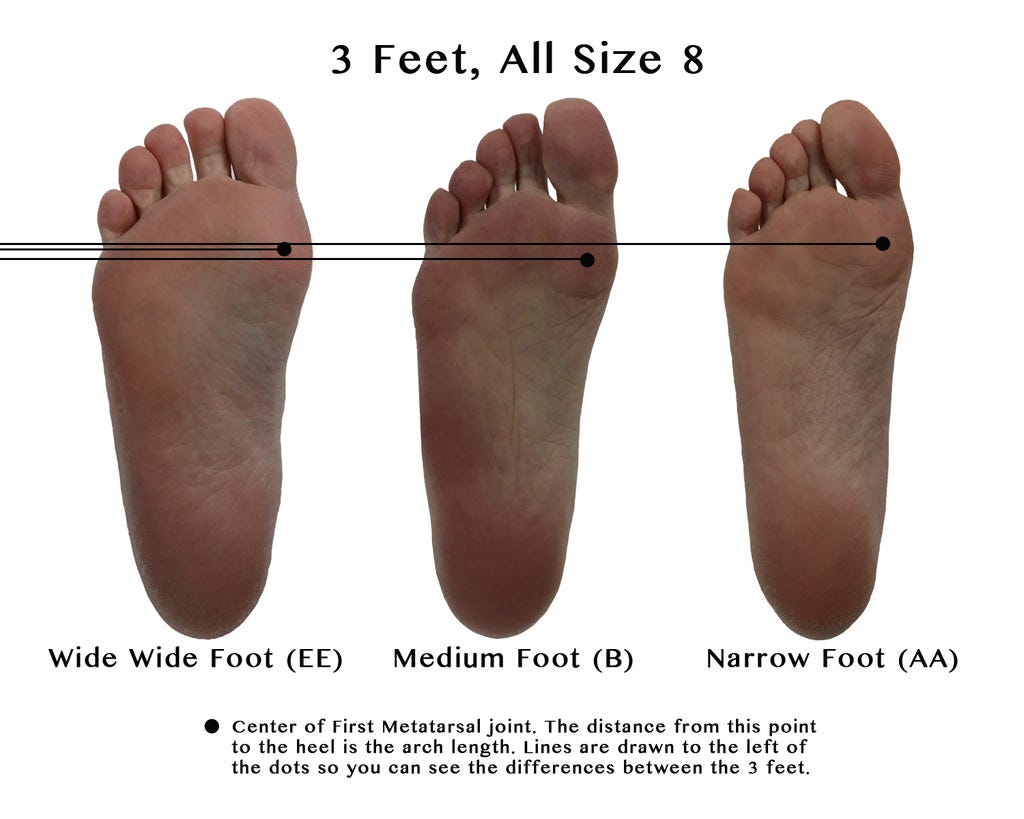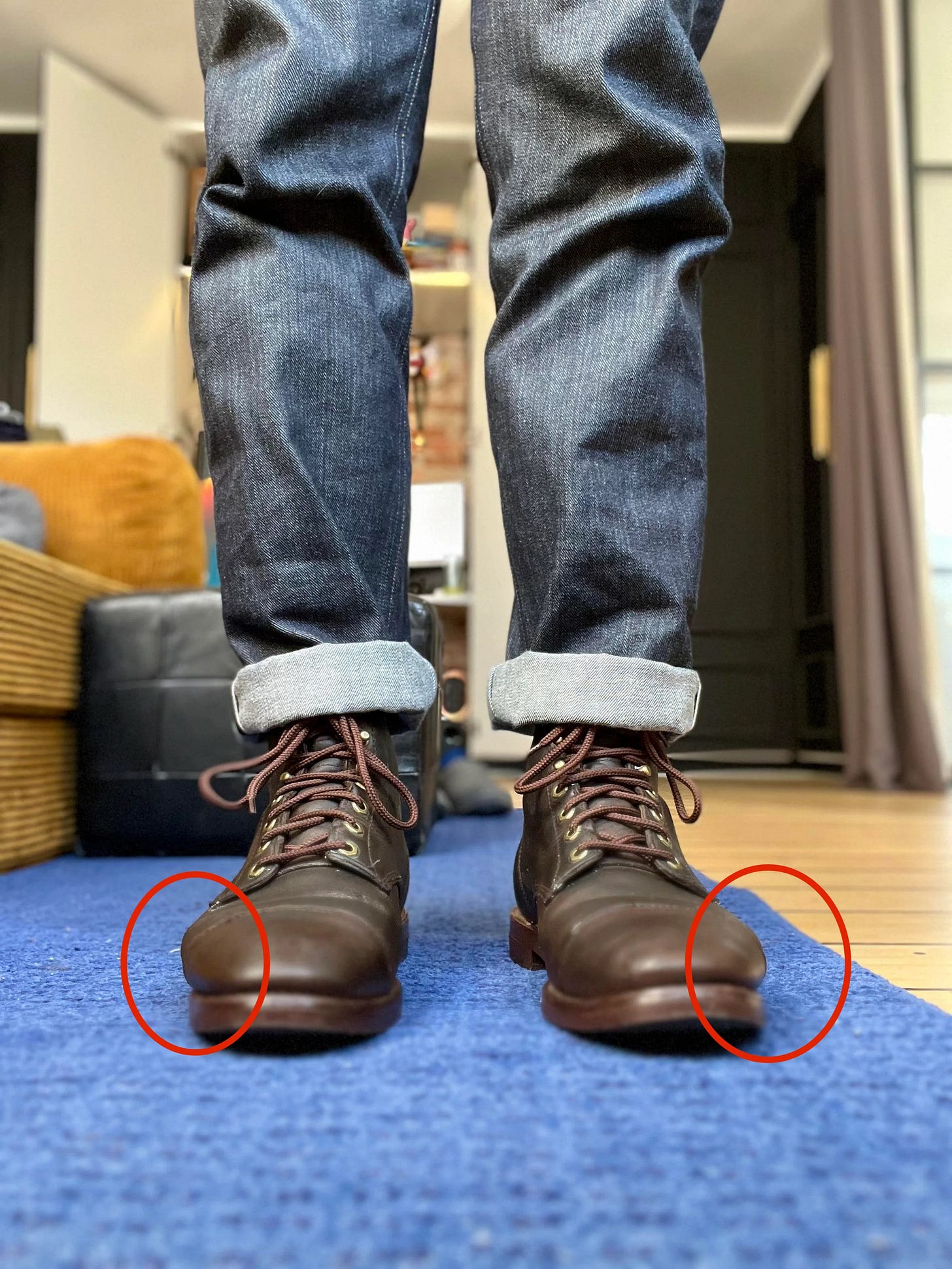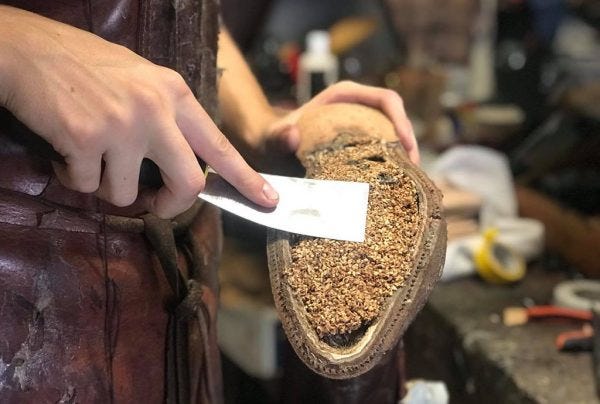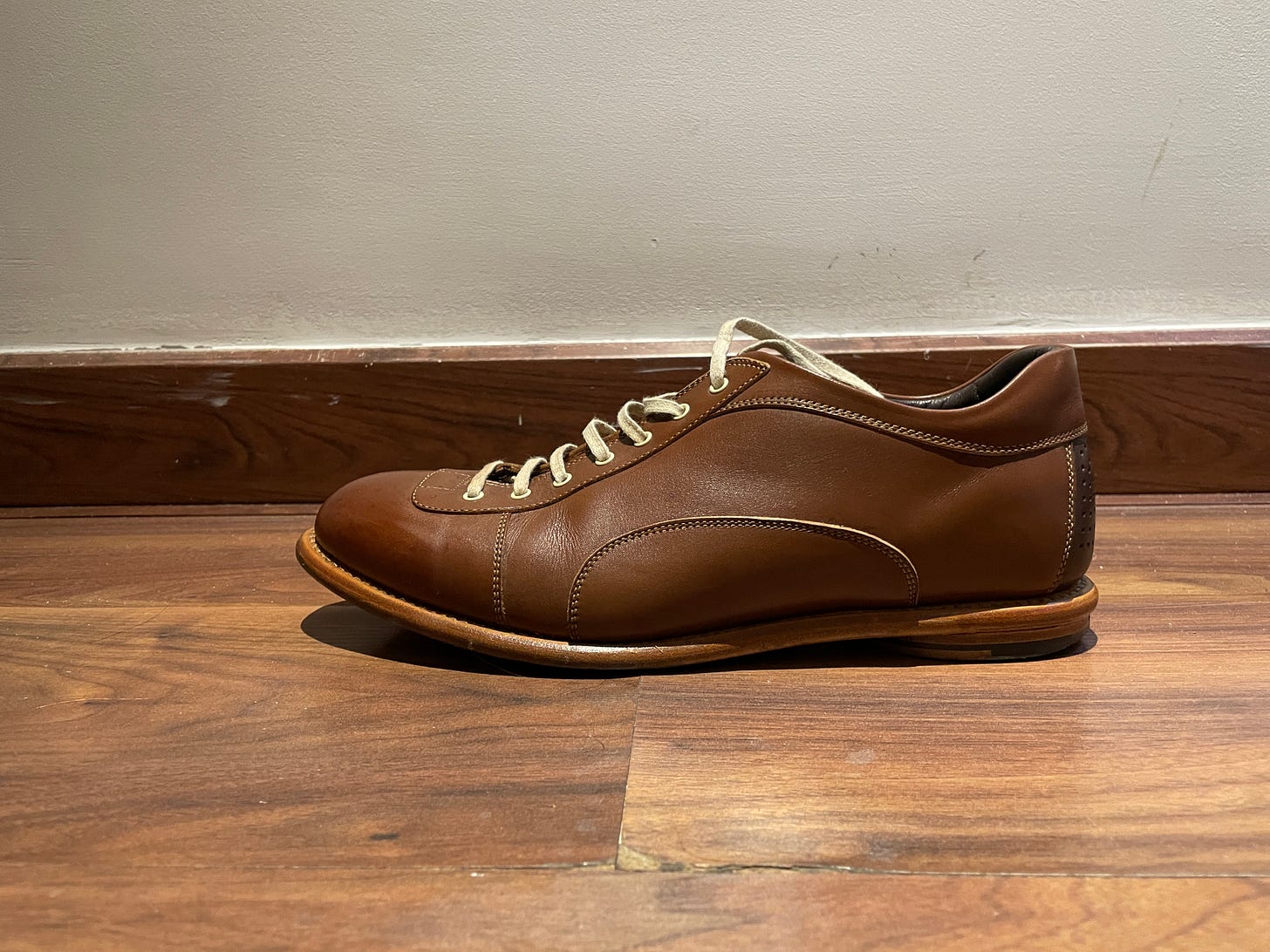#06 | More than arch support: Foot ergonomics of (welted) shoes
In this post, I want to share a thought process for fitting welted shoes and boots. This is not a guide. This is a list of factors which you probably should consider to find the most comfortable shoes for your feet. (Shoes that aren’t sneakers, that is.)
Let’s dive in.
Some background first
With each step, your foot absorbs an impact force that equals between 1.5 to 2 times your body weight.
That force is distributed between 26 bones, 33 joints, and 29 muscles, plus tendons and ligaments. It’s a precise biomechanical system, that needs equally precise support.
In my personal experience, though, most conventional shoes and boots fail at that.
When you think of comfortable shoes, what probably comes to mind first are either sneakers, or professional running shoes like Nike, Asics, or Hoka.

For example, I have a friend who totally raves about his Hoka Bondi 8, and he walks at least 10km daily in them. I get his point, but I also crave more stylistic flexibility in footwear. Simply put, I want to wear stuff that looks great and feels close enough to running shoes or sneakers.
Size is not a good indicator of fit
There are normal feet, flat feet, high-arched feet, wide feet, narrow feet, feet with high instep, low instep (so called low-volume feet).
Running shoes are easy to adapt to most types of feet because of their stretchy synthetic upper. There’s just very little that could go wrong there.
There are also different gaits: with supination (tilting feet outwards), pronation (tilting feet inwards), and normal.
There’s just too much variability. Shoes that feel comfortable to one person are a nightmare to another.
This is why Alden offers 11 lasts which they produce in a variety of width options.

Just thinking about this can get overwhelming.
Know your feet: arch, width, instep
Here’s a quick rundown of various types of feet and their ergonomic needs:
Flat Feet with minimal or no visible arch need firm arch support to prevent over-pronation (when your foot rolls inward).
High-Arched Feet are the opposite of flat. They don’t distribute weight well, and therefore need cushioned support to absorb impact.
Wide Feet are more common than you’d think, but they are often underserved by standard footwear sizing. Wider feet need shoes with a wider last to prevent pinching or discomfort.

The above sounds obvious, but a lot of people try to make narrow shoes work for wider feet. Here’s the result:

Narrow Feet: Need a snug fit to avoid excessive movement within the shoe, which can lead to blisters.
High Instep: The top of the foot is raised, making some shoes feel tight or restrictive. High instep feet need shoes with adjustable laces or a higher vamp for comfort.
Low Instep/Low Volume Feet: Slim feet that can feel lost in standard shoes. They need shoes with extra padding or the ability to tighten for a secure fit.
Shoe design elements
Wide vs. Narrow lasts
Generally speaking, a last is a mold that determines the shape and fit of any footwear. A well-designed last can mean the difference between a barely passable shoe and one that makes the shoe feel like an extension of your foot.
For example:
Wide Lasts accommodate broader feet without sacrificing style.
High Volume Lasts provide space for high insteps.
Ergonomic Lasts ensure arch support aligns with the foot’s natural contours.
Toebox shape
Ever felt the uncomfortable pressure on a pinky toe or big toe when wearing shoes? Your toebox was probably too narrow.
Compare these two toebox shapes:


Corkbed
Most (but not all) welted shoes and boots have a cork layer which serves a dual purpose:
First, it provides cushioning
Second, it molds to the shape of your feet over time

This cork layer is one of the reasons why higher-end welted shoes become more comfortable with wear.
It's also the reason why many people online advise against buying used shoes: by the time you buy them, the cork has already adapted to the feet of a previous owner. This, however, can be fixed by a full resole.
⚠️ Now, the important thing about this layer is that your feet must be ever so slightly narrower than the cork, so that there’s enough room for them to sink in.
Depending on construction, a welted shoe that feels comfortably snug might actually be too tight, when considering the size of the corkbed.
Lacing system
Folks in the men’s footwear community don’t talk enough lacing, even though it has a massive impact on the overall fit and comfort.
The number of lace eyelets, the spacing between them, the type of fixtures (hollow rivets, D-rings, speed-hooks) all influence fit. That’s quite a few variables to consider on top of the last and toebox shape.
Personally, I have low volume fit with low-ish instep, and need to be able to tighten the upper of the shoes to secure my feet firmly. Thus, for me, the more eyelets I have, the merrier, because they allow for a larger adjustment potential of the upper.
Type of outsole
In one of my older posts I mentioned that the Vibram catalogue for 2024 has 190 pages. This should tell you a lot about the variety of outsoles you can pick from.
The general rule of thumb is: the softer the outsole, the more comfortable the shoe will feel when walking. I say "general” because if you have musculoskeletal conditions (e.g., flat feet) that demand firm support, a soft outsole can be harmful.
The most amusing thing about outsoles is that you won’t know what’s right for your feet before you try walking for miles on end with each type of outsole.
A quick example:
I’m writing this post while on a trip to Ho Chi Minh City and Bangkok, and I brought a pair of vintage [practically unworn] Heschung bowling shoes as my primary pair. They have a thin leather outsole which I fitted with Unikstep protective outsole pads, and a very low drop (read below about “drop”).
They also included a foam insole to soften the heel impact a bit.
Typically, my ball of foot is rather sensitive: when wearing shoes with a thin outsole I feel every single piece of gravel under my feet, even with thick insoles. Not this time.
Despite how thin the outsole is, these shoes are exceptionally comfortable. In fact, they wear like sneakers.
When I first tried them on, I didn’t expect them to be this walk-friendly, and I honestly took a gamble traveling with them to Southeast Asia.
The lesson from this is that my first impression about this outsole was completely wrong.
Contoured footbed
While the most common example of this is Birkenstock, some higher-end shoes will also have a so-called contoured footbed, which is basically a built-in orthopedic insole.
This is not for everyone, and depending on the shape of your foot you might find contoured footbeds uncomfortable.
As for me, I have two pairs of Dieter Kuckelkorn oxfords that simply cradle my feet. Wearing them for the first 5 minutes felt a bit strange, but after that they felt like second skin.
Drop: High / Low / Zero
Drop is the height difference between the heel and the forefoot. Consider these two boots:
A relatively low drop Grant Stone Field Boot:
And a 4 cm (~1 inch) high drop Phoenix Boot from Thomas Bird:
Personally, I prefer a moderate drop, because high drop shoes put a lot of pressure on the ball of foot, which in my case makes both walking and standing excruciatingly painful.
This is all for now. Hope this laundry list of footwear fit variables is useful :)
About Kobo Mono
Kōbō Mono is a blog about quality boots and shoes.
It’s currently run by one person: me. (Talking about myself in a third person has never felt more odd.)
It’s a place to connect with the fellow footwear enthusiasts, share what I work on, and build a community.
If you like what you read here, please consider subscribing or sharing this post with friends. Your help will go a long way 🙏
And since we’re at it, I want you to know that my long-term dream is to start a shoe company. We’ll see how that goes.
You can read more in the About section here: https://kobomono.substack.com/about




